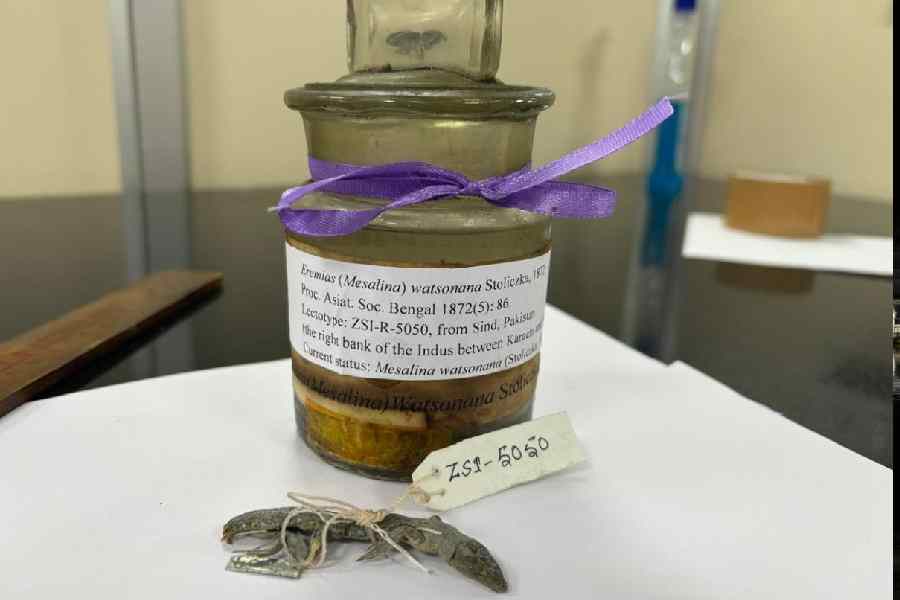Scientists at the Zoological Survey of India (ZSI), Calcutta, have designated a lizard, preserved in a jar of ethanol for over 150 years, as the original reference specimen for this long-tailed species from the Sind region.
Researchers Pratyush Mohapatra and Sumidh Ray have designated the specimen housed in ZSI’s reptilian repository as a “lectotype”, a specimen selected to officially represent a species among multiple similar specimens in museums in London and Vienna.
A 19th-century palaeontologist, Ferdinand Stoliczka, working with the Geological Survey of India had first described the long-tailed lizard collected during expeditions into Sind and Persia and deposited a specimen into the zoological collections of what was then the Indian Museum, Calcutta, in 1872.
The lizard, named by zoologists Mesalina watsonana, is found across arid regions of Afghanistan, India, Iran, Pakistan and Turkmenistan, typically inhabiting dry foothills, sand dunes and sandy plains with poor vegetation and known for its speed and sand-coloured camouflage.
Despite their wide distribution, many species within the group of such desert lizards are difficult to distinguish from one another based on appearance alone, making a reference specimen crucial for accurate identification and comparison.
Alongside Stoliczka’s specimen in the ZSI, there are three more specimens in a museum in Vienna and one in London. Without a designated reference, these five specimens made lizard species comparisons difficult for taxonomists.
Now, Mohapatra and Ray have analysed historical records and used modern zoological nomenclature codes to designate the specimen deposited by Stoliczka himself in 1872 as the “definitive lectotype”.
“The ZSI specimen is the oldest one deposited by Stoliczka. ZSI holds a large collection of Stoliczka’s specimens and possesses the majority of his name-bearing types, including those of 26 reptile species,” the scientists said, outlining their reasons in the journal Zootaxa.
The ZSI’s reptilian repository houses nearly 45,000 specimens, representing some 600 species from within India and over 800 from outside.
“Stolicka’s material is foundational,” Dhriti Banerjee, the ZSI director, said in a media release on Monday. “Many of his type specimens remain central to reptile taxonomy in south and central Asia and the ZSI holds the majority of them. Validating and anchoring these names is not just for scientific clarity — it is also honouring a legacy of discovery.”










